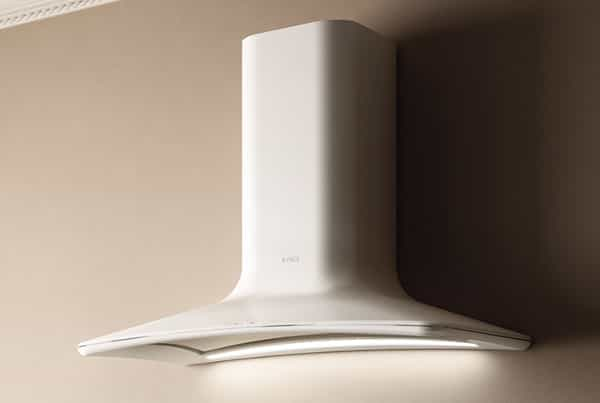How does it work
The activated carbon filters applied in a filter hood have the function of purifying the air effectively. Activated carbon has the peculiarity of retaining dirt particles and impurities in general; the air that passes through the filter is reintroduced into the environment purified and clean . Remember that this filter cannot be washed or reused, but must be thrown away when it has exhausted its function. The duration depends on the quantity of air that passes through them, and therefore on the more or less intense use to which they are subjected. Replacing them regularly guarantees optimal filtering of fumes and vapors inside the hood. As a guide, it can be said that with average use, carbon filters should be changed approximately every four to five months. Together with the activated carbon filter, an anti-grease filter is usually combined, specific for oily substances. Its purpose is also to protect the internal parts of the hood from grease. It is cheaper and is made of acrylic and has a limited lifespan, at the end of which it must be thrown away. The most innovative hoods, but also the best quality ones, have aluminum or steel filters. The steel one offers maximum performance and is also pleasant to look at and can be washed in the dishwasher.
Characteristics
Modern activated carbon hoods have innovative designs and can be retractable, i.e. totally hidden by the wall units, or visible, well integrated in shapes and colors with the furnishing style of the kitchen. Among the latest innovations on the subject, there is also the perimeter extraction hood . As the name suggests, it is a hood that extracts not only in the central part but also along its entire perimeter. The larger suction surface allows for a broader and more targeted action, which does not let fumes and vapors escape. Furthermore, these solutions for purifying the air usually have a flat surface, therefore easier to clean and are also equipped with special sound-absorbing pads, so as to really reduce the noise of the element to a minimum. An important aspect of activated carbon hoods is their shape: they adapt to different architectural situations, such as corners or kitchens with a central island. In this case the appliance is fixed to the ceiling exactly above the hob. The extraction system must always cover the entire surface used for cooking, but if this is not possible it can be remedied with a higher powered hood, which can still extract all the vapours. It is interesting to note that a machine that is a little more powerful than necessary vacuums adequately at a lower speed, therefore with less noise.
How to choose
Noise is in fact a factor to keep in mind when choosing the model suited to your needs. Quieter than before, hoods must produce as little noise as possible so as not to be annoying. The acceptable noise level for a good hood is 50 – 70 decibels; the indication of the actual value is given in the instruction booklet. The height at which it must be mounted in relation to the hob is also important; it must be 65 centimeters to avoid the risk of fire, but not higher than 90, to prevent smoke and vapors from dispersing. The last detail to consider when evaluating the activated carbon hood is the lighting. A neon or halogen light bulb is always present in the structure to simplify cooking operations and make them safer. For your own safety, it is advisable to check that the activated carbon hood has IMQ certification , and that it has therefore passed all the tests to ensure its suitability and functioning. Taking into account all the details illustrated so far, which influence the final price of the product, a good 60 centimeter under-cabinet extractor or filter hood with activated carbon costs starting from 80 euros. Choosing instead a "chimney" type wall hood, the price is around 200 – 250 euros, which increases if you want it with particular finishes, for example in wood. The cost of professional hoods that cover island kitchens is higher, reaching up to 1,000 euros.
You may also like
Home Cleaning: A Glimpse into the Future of Floor-Cleaning Robots in 2025
In 2025, the world of floor-cleaning robots will witness significant innovations and market shifts. From advanced models to competitive deals, this comprehensive exploration examines emerging technologies, geographic trends, and purchasing advice to help consumers make informed decisions in acquiring their ideal floor-cleaning robot.
Electric Razors: Innovations and Market Trends
As we step into 2025, the electric razor market is brimming with innovations that promise to transform personal grooming. This article delves into the latest models, market trends, and emerging technologies in the electric razor industry. Explore the best offers available and understand the regional buying trends shaping the future of personal grooming.
Electric Toothbrushes: Technologies and best deals
Electric toothbrushes have become a staple in oral hygiene routines, thanks to innovations, affordability, and market trends influencing global consumer choices. This article delves into the latest models, technologies, best deals, and geographical trends shaping the choice of electric toothbrushes today.
All-Season Motorcycle Tires in 2025
The year 2025 marks a pivotal moment for all-season motorcycle tires, with new models featuring cutting-edge technology, competitive pricing, and robust market trends. This comprehensive analysis explores advancements, regional market impacts, and exciting offers in the all-season motorcycle tire sector.
